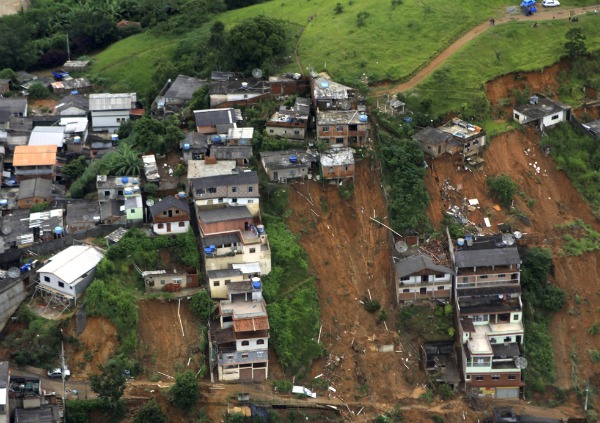![]() While Australia continues to cope with widespread flooding in Queensland and elsewhere and the death toll continues to rise (at least 20 people), in Brazil landslides and flooding in the past week have claimed at least 700 lives. Yet international coverage of the Brazilian tragedy has been scant at best.
While Australia continues to cope with widespread flooding in Queensland and elsewhere and the death toll continues to rise (at least 20 people), in Brazil landslides and flooding in the past week have claimed at least 700 lives. Yet international coverage of the Brazilian tragedy has been scant at best.
Four days of torrential rainfall (blamed on La Nina) triggered numerous landslides and flash floods in the Serrana region near Rio de Janeiro. A month’s worth of rain fell in just a few hours and flood waters rose quickly. Neighborhoods perched on steep hillslopes were destroyed by landslides, while low-lying areas were inundated by floods. Most of the casualties have come from four towns, but some isolated areas are still completely cut-off.

Landslides in Nova Friburgo, Brazil, January 2011 (photo from Rio de Janeiro state government, via Sacramento Bee's The Frame Blog
Some blame is being placed on poor housing construction, but from the photos and videos I’ve seen, the problem seems to be dense populations in high risk areas. More problematically, it appears that response by the Brazilian government has been slow and there are concerns about clean water and the threat of a disease epidemic amongst survivors. While it is hoped that the worst rain is over, light but steady rainfall is predicted for the next few days, and with saturated soils there will likely be more slides and more deaths. Even without fresh slides, the death toll will likely rise substantially as recovery efforts continue.
But it’s not just Brazil, Australia, and Pakistan that have been suffering from devastating floods, but Sri Lanka, the Philippines, and South Africa have also been hard hit by floods in the last week.



Comments (3)
Links (4)-
-
-
-
Pingback: Stuff we linked to on Twitter last week | Highly Allochthonous
Pingback: Edible debris flow | Highly Allochthonous
Pingback: Flooding around the world | Highly Allochthonous
Pingback: Flooding around the world « Watershed Hydrogeology Blog